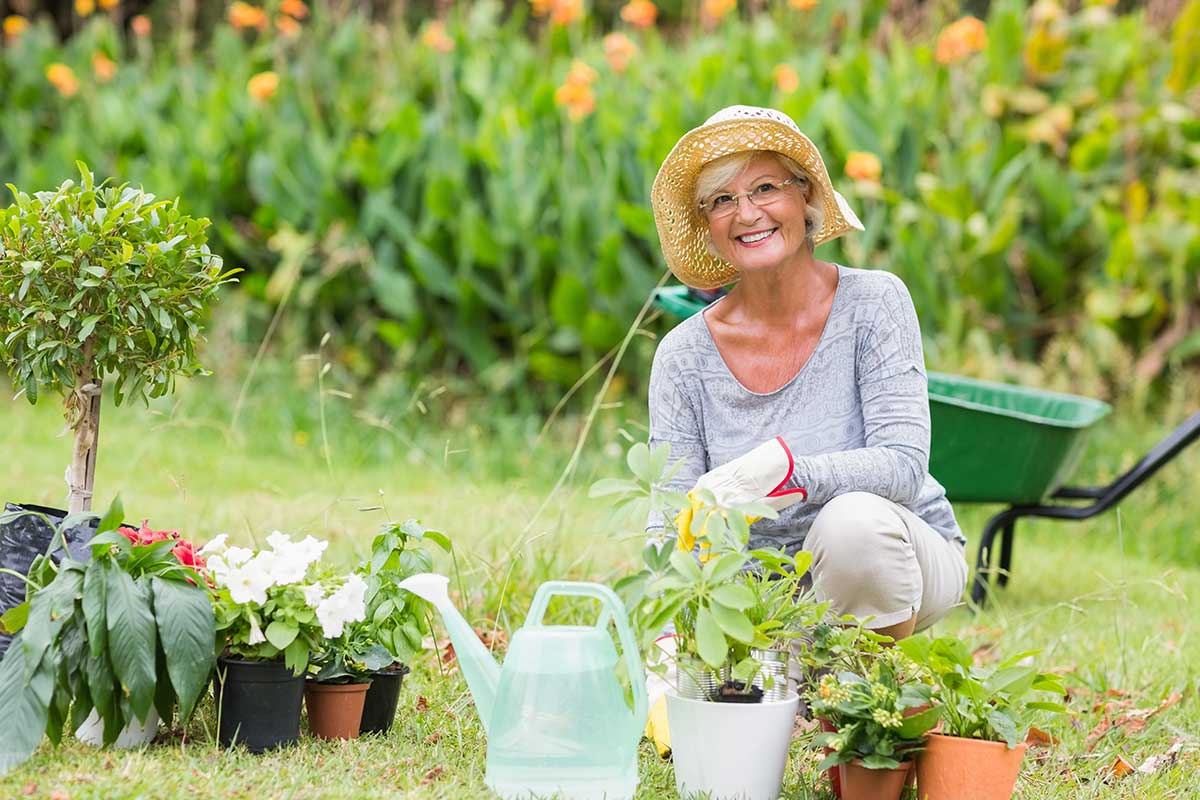If you are like many retirees, including residents at Discovery Commons retirement communities in Florida, you get your hands dirty in soil pretty often. Gardening provides the perfect excuse to dig in the dirt. Did you know that there is much more to dirt than nourishment for your plants and the smudges left behind on your clothes? Soil is full of amazing secrets.
Soil Touches Everyday Life
Whether we wiggle our toes in cool soil on any given day or not, our lives are full of associations with dirt. Our homes are built on soil, the air we breathe is possible because of plants growing in the soil, the clothes we wear are often from plants, and water that we drink is cleaned by soil. Of course, food we eat needs soil to grow. Without soil, our ecosystems simply couldn’t survive.
Did You Know?
Unless you are a serious gardener or studied the topic in a college course, the chances are that you’ve never given a great deal of thought to soil. Did you already know any of the following soil-related facts?
- Soil is alive with varying amounts of minerals, nutrients, and living organisms but also contains dead organisms.
- Soil is formed from rocks and decaying animals and plants.
- A typical soil sample is 45% mineral, 25% water, 25% air, and 5% organic matter.
- In one shovel full of rich soil, there are more living creatures than there are people across the entire globe, according to scientists.
- Among the living creatures that inhabit soil are: algae, slugs, moles, bacteria, earthworms, nematodes, insects, fungi, and gophers. The living organisms affect the plants physically and chemically. For instance, organisms add organic matter (OM) to the soil and help to decompose OM.
- The organic matter in soil is partially broken down by bacteria and fungi.
- Rocks are broken up by plant roots and lichens, which produces new soil.
- Roots are important in that they loosen soil, allowing oxygen to penetrate. The oxygen benefits the animals living inside the soil.
- Roots also help to prevent erosion, and they hold soil together.
- The way soil gets its texture is by mineral particles of different sizes, such as clay, silt, and sand.
- More than 70,000 kinds of soil in the United States have been identified by scientists.
- The natural processes which form a single inch of topsoil can take more than 500 years.
- Our planet’s outermost layer is made up of soil.
- The most productive layer of soil on the planet is topsoil.
- If you were to spread five tons of topsoil over an acre of land, the soil would be as thin as a dime.
Florida Soil and Water-Holding Capacity
One of the myriad aspects of soil that is of interest to anyone tending plants is the water-holding capacity or the ability of the soil to hold water. Most of the water utilized by plants comes from the soil. If you are gardening at Discovery Commons retirement communities in Florida and use Florida soil, you may already be aware that it is a sandy soil, which has low water-holding capacity. Clay soil, by comparison, typically remains saturated for a longer period of time.
Gardeners, Here is What Soil Does for Plants
Soil supports plant growth by providing the following:
- Oxygen. The air in soil that provides oxygen to root cells and other living cells breaks down sugars and releases energy needed to grow and live.
- Water. Spaces in soil particles also contain water, which moves upward through plants. Plants are cooled by the water as it evaporates off tissues, such as the leaves. The water carries essential nutrients into the plants and aids in maintaining cell size so that the plants don’t wilt. The water in soil also serves as a raw material in the process of photosynthesis, whereby plants capture light energy and store it in sugars to use later.
- Anchorage. A plant’s root system extends downward or outward through soil, stabilizing the plant.
- Nutrients. Soil supplies plants with nutrients and holds the nutrients that are added in the form of fertilizer.
- Temperature modification. Soil insulates roots and provides protection for times when there is a drastic fluctuation in temperature. This function of the soil is important in times of the year when the weather is excessively hot or cold.
With all that could be said about soil, which is truly a massive amount of information, nothing beats the fact that soil is the most basic connection with nature that a person can have. There’s something reminiscent of childhood in every mud puddle and clump of soil. As many of our residents do at Discovery Commons retirement communities in Florida, you can enjoy the secrets of soil with gardening or a barefoot stroll.
Do you have an aging parent who may require Assisted Living or Memory Care? Contact Discovery Commons At Bradenton online or give us a call at 941.798.3727 today.







